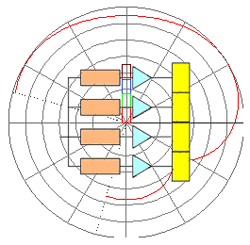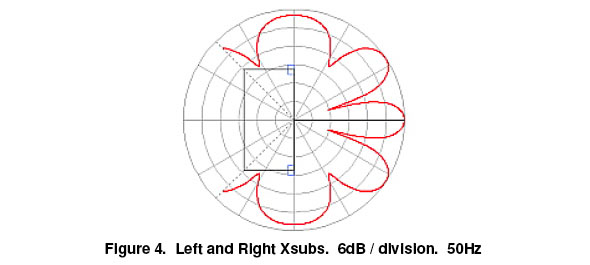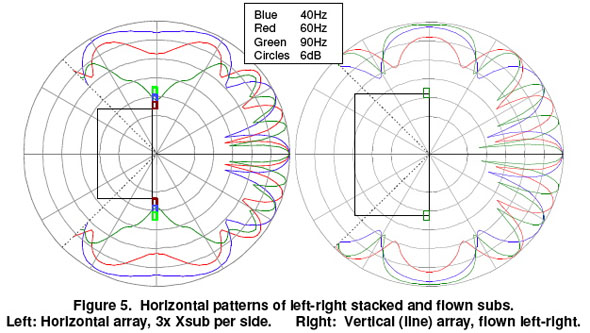
Figure 4 shows what happens when another Xsub is added at the opposite side of the stage. The result is very different—and not better!
Because the woofers are omnidirectional, everyone in the room hears both woofers. However, the distance from each woofer to the listener is different, except in the middle. Where the distance difference equals an odd multiple of a half-wavelength, the sounds from the two woofers cancel, and the listener hears no bass, at least not directly from the woofers.
These lobes will produce uneven bass tonal balance and level in the venue. In indoor venues, the tonal balance problems are partly masked by reverberation, but the lack of clarity remains. Outdoors, there is no reverberation, and the problem is usually quite obvious.
Figure 5 shows performance of two practical cases – groundstacked rows of subwoofers, and flown subwoofer line arrays.
The only region that is lobe-free at all frequencies lies along a line running directly out from center stage. Along this line, the bass is strongest and clearest. This is the familiar “power alley” effect that makes the bass sound very good at the mix position, but does not give the mix engineer a good idea of what the rest of the audience is hearing.
The best solution for lobing problems is to use a single center cluster instead of separate left-right stacks. This works for both horizontal and vertical arrays. However, it is not often a practical solution for staging and rigging reasons.
When left-right stacks are used, lobing problems can be reduced using stacking, beamforming and/or gradient woofers. In all cases, the idea is to minimize interference between the coverage areas of the two stacks.


